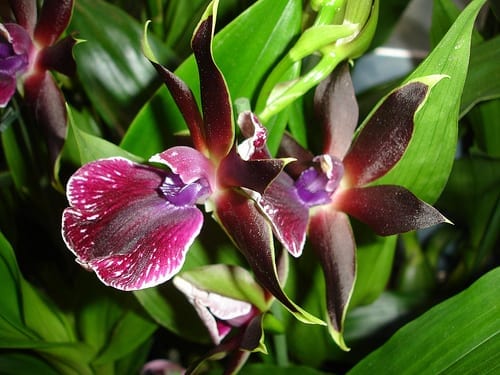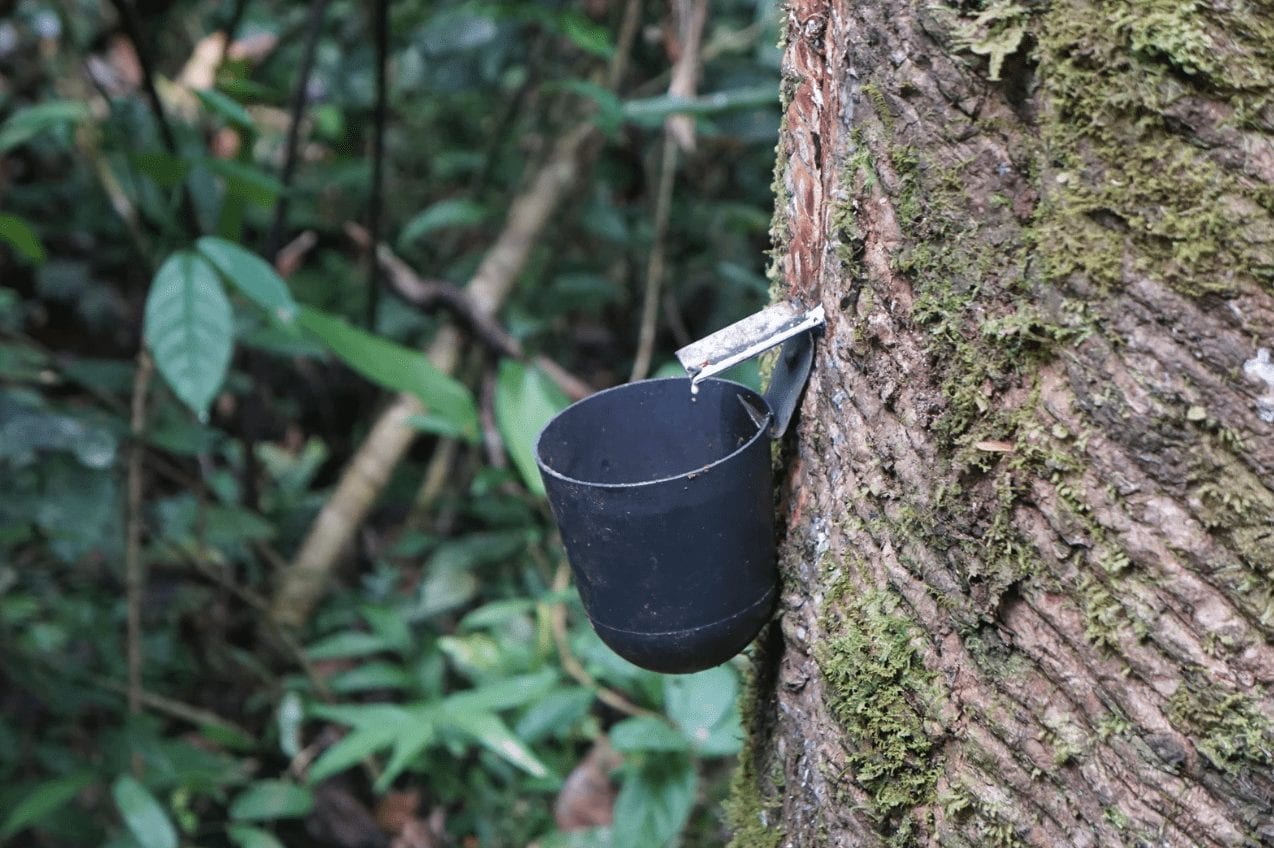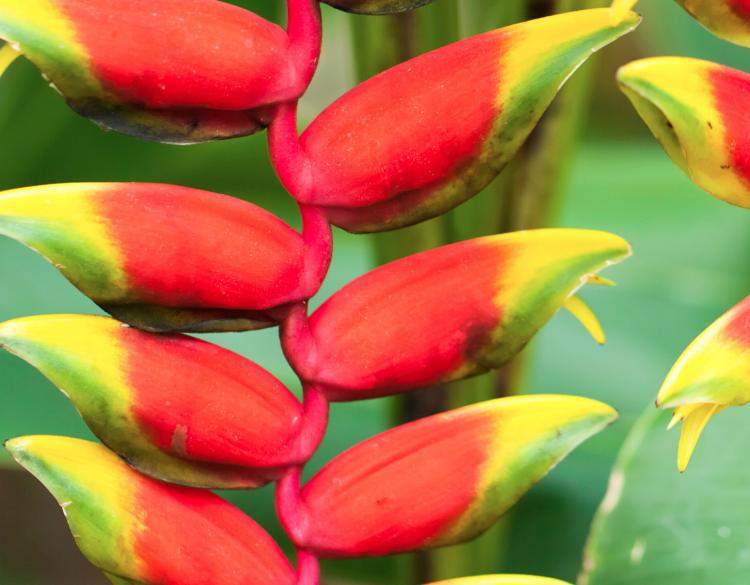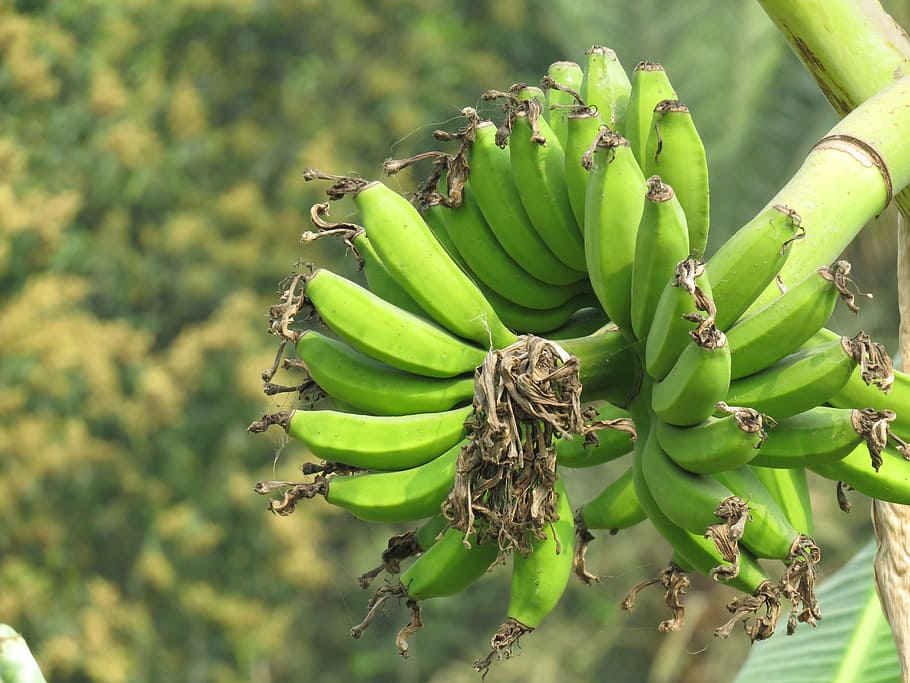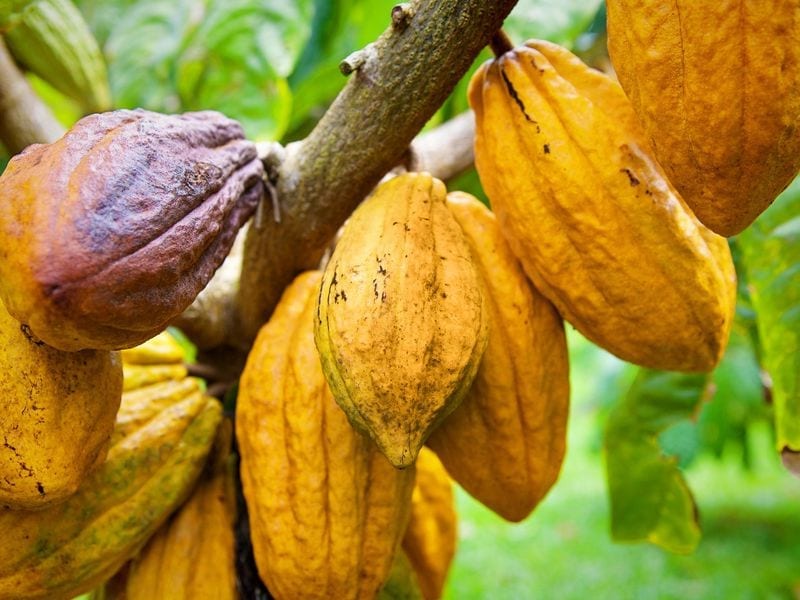Top 12 Amazon Rainforest Plants to Spot on Your Trip
James Bustamante is Native to New York but born to Peruvian parents. He has been traveling throughout Latin America since early 2003 and finally made his home in Peru. James has made his way by eating and traveling through almost every country in Central and South America.
Last Updated on January 15, 2021 by James Bustamante
Amazon Rainforest plants are unique among the rest of the world. The Amazon Rainforest has always been an important destination for photographers all over the globe for good reason.
This vast natural location is the most biodiverse place on the entire planet. With over 80,000 native species of Amazon rainforest plants, It has unique specimens of both flora and fauna that you won’t find anywhere on earth.
Travelers Tip: If you want to get to see these plants remember that it is usually better to go to the Amazon before the Machu Picchu Hike.
Let’s go over the top 12 Amazon Rainforest plants you will spot while on your trip!
1. The Giant Water Lilies of the Amazon Rainforest (Victoria Amazonica)
One of the most recognizable images someone immediately has of an Amazon rainforest plant is the giant water lilies scattered throughout the river by the same name.
These are also known as royal water lily, giant water lily, or Amazon water-platter. The Giant water lily can grow up to 10 feet (3 meters) in diameter.
These impressive water plants were actually named after Queen Victoria from the United Kingdom and can in some instances hold the full weight of a person.
Classification
- Scientific name: Victoria amazonica
- Higher classification: Victoria
- Rank: Species
- Family: Nymphaeaceae
- Kingdom: PlantaeOrder: Nymphaeales
2. Orchids (Orchidaceae)
Orchids or Orchidaceae. can be found in almost any part of the world, there are around 30,000 different species of orchids after all.
However, the types found in the Amazon rainforest are unique due to the variety of colors which is quite extensive.
You can basically find them in just about every color under the rainbow. These beautiful Amazon rainforest plants can be found in several different shapes and sizes throughout the land.
There are two types of Orchids in particular that most people commonly use but are unaware of the fact. The first is Jasmine, they have quite the fragrance when they bloom at night.
This type of orchid is commonly used for its strong smell. The other type has a big commercial value, it is the vanilla orchid. Yes, that vanilla flavor you love comes from this useful plant which you can find all through Central and South America.
Classification
- Scientific name: Orchidaceae
- Higher classification: Asparagales
- Order: Asparagales
- Rank: Family
3. Rubber Tree (Hevea Brasiliensis)
Next on our list is the Rubber Tree or Hevea brasiliensis. These impressive Amazon rainforest plants grow from 100 – 130 feet (30 – 40 meters) in height and are known to live up to and sometimes over 100 years.
You can spot this Rubber tree by its peculiarly shaped green leaves. Once you remove some of its silver bark you will notice the milky white sap which flows quite easily, this is known as latex.
These Amazon trees can begin to be used as sources for latex when they are around 6 or 7 years old. These first few years are considered its immature phase, the next 25 years will be considered as the production phase for this rainforest plant.
The rubber tree sometimes called rubberwood, was only native to the Amazon rainforest however there was a period when seeds were smuggled into Southeast Asia
Classification
- Scientific name: Hevea brasiliensis
- Higher classification: HeveaRank: Species
4. The Heliconia Flower (Heliconiaceae)
The Heliconia flower is also referred to as the hanging lobster claw or parrot flower in some cases. It really depends on how these strangely shaped Amazon rainforest plants look to you.
The flower can come in a variety of shapes actually, the Heliconia will also be very bright.
In total there are about 40 different species of Heliconias. They might not look like it at the beginning but these quirkily shaped flowers are actually related to the banana family.
The flowers on this Amazon rainforest plan are shaped in a way to tuck its nectar way in the back, at the best of the flowers.
This makes it a perfect plant for hummingbirds to feed on. You can find these plants all throughout the Amazon rainforest, they measure from 1.5-15 feet tall (0.05 to 4.5 meters).
Classification
- Family: Heliconiaceae; Vines
- Scientific name: Heliconia
- Kingdom: Plantae
- Higher classification: Heliconiaceae
- Order: Zingiberales
- Rank: Genus
5. Banana (Musa)
Who has not ever had a banana? They are sweet, packed full of vitamins (full of potassium), and delicious but, did you know that botanically they are an elongated berry?
Bananas are one of the most important food crops in the world, it is actually the fourth largest! What’s interesting is that the actual blossoms from the banana are what we eventually consume.
This process will take a while though, the average banana takes about 4 months to fully ripen enough to be apt for human consumption.
Banana plants are pretty big as well and they can have as many as 150 bananas growing at the same time. These Amazon Rainforest plants are easily distinguishable.
You will spot them because of the giant banana leaves and of course all the bananas which seem like they are upside down.
Classification
- Scientific name: Musa
- Higher classification: Bananas
- Order: Zingiberales
- Rank: Genus
6. Bromeliads (Bromeliaceae)
These beautiful Amazon rainforest plants have rather a bright coloring that ranges from blue to shades of purple and then from orange to reds as well.
These plants are very strong and can grow in a variety of different terrains from the soft fertile ground to hard rocky exteriors.
Some people have even been able to gown them in a simple pot at home. This ability has made them an important crop for us humans and the world economy.
Some of the fruit in the Bromeliads family isn’t just edible, it can be downright sweet and delicious. The most widely eaten of this fruit just happens to be the pineapple.
Bromeliads can be found in many parts of the world but do a particularly good job of growing between Central and South America.
Classification
- Scientific name: Bromeliaceae
- Higher classification: Poales
- Order: Poales
- Rank: Family
- Family: Bromeliaceae; Juss.
- Kingdom: Plantae
7. Cacao (Theobroma cacao)
As we go down the list of the top 12 Amazon rainforest plants to spot on your next trip we come across a very ancient one that has been used by native tribes for generations.
Do you like chocolate? Most of us cannot imagine a world without this delicious dessert/ingredient. Why would anyone want to?
The Cacao has been one of the most important Amazon rainforest plants ever since early man discovered and utilized it. Don’t let the desserts fool you though.
Cacao is considered a superfood that is full of health benefits as well as being an antioxidant. Raw cacao or cacao nibs added to your diet will apparently give you added energy levels as well as focus and mental alertness.
The cacao seed is full of iron, it is actually the highest plant-based form of iron, it also has magnesium to assist you with keeping a healthy heart as well as brain function.
One added benefit is that cacao seems to have more calcium than cow’s milk, those are a lot of benefits coming from these small Amazon plants.
If you are not keen on Cacao nibs or eating raw Cacao in any form you can always do it the easier way and eat chocolate. For best results use dark chocolate where it is at least 75% pure Cacao.
Classification
- Scientific name: Theobroma cacao
- Higher classification: Theobroma
- Rank: Species
- Family: Malvaceae
- Kingdom: Plantae
- Order: Malvales
8. Coffee Plant (Coffea) a Much Loved Amazon Rainforest Plant
For the majority of us, getting up early in the morning and not having a cup of coffee would be a recipe for a bad day. It is an important crop that grows all throughout central and south America that is exported to all corners of the world.
This Amazon rainforest plant is definitely one of the most important on the list just based on a little bit of help it gives us in the morning.
That is not all though, it is also full of antioxidants. Initially, the coffee plant grows into perennial shrubs which will then develop into small trees of about 10 feet (3 meters) tall.
When you see the coffee plant you will notice it’s white and very highly scented flowers. The fruit of the coffee tree is actually a small, red (sometimes purple) cherry.
The cherries are then harvested and taken for processing. The time it takes from planting the coffee plant to harvesting the cherries is 3-4 years.
Classification
- Scientific name: Coffea
- Higher classification: Coffeeae
- Rank: Genus
- Family: Rubiaceae
- Kingdom: Plantae
- Order: Gentianales
9. Passion Fruit Flower (Passiflora)
Now it’s time to showcase one of the oddest looking flowers you have probably ever seen. The Passion fruit flower or Passiflora flowers are distinguished by a characteristic design of radiating filaments and tiny structures all placed on different levels.
The average passion flower will have five petals and then another 5 alternating sepals. To the naked eye, they are both similar in size and color but for a botanist, the sepals are distinguished by a green hook, or awn, at the tip.
The passion fruit comes from these interesting Amazon rainforest plants. Even the Passiflora fruit has a curious aspect to them.
They are usually described as having a tough exterior but soft interior full of seeds wrapped in a strange almost mucus-like covering.
Once you taste a ripe passion fruit though you will be hooked. In Peru, you can try the “Maracuya” or the “Sweet Granadilla” which happens to be my favorite.
Classification
- Scientific name: Passiflora
- Higher classification: Passion flowers
- Order: Malpighiales
- Rank: Genus
- Family: Passifloraceae
- Kingdom: Plantae
10. Monkey Brush Vine (Combretum rotundifolium)
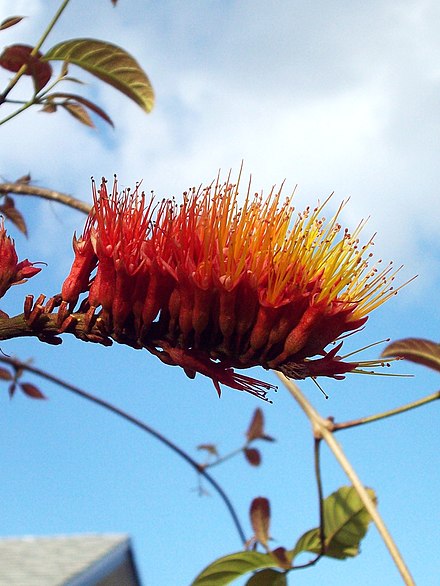
This strange Amazon plant has an interesting aspect to it, to say the least. The Monkey Brush Vine is a native species to South America, it has the strange ability to grow just about anywhere, even on other plants and trees.
Many of the natives have compared to a plant version of a parasite. These Amazonian rainforest plants are easy to spot through the dense greenery thanks to their bright orange and yellow flowers.
The flower has long and colorful stamens growing out of it, this is where the Monkey Brush actually gets its name. Some unsuspecting travelers will sometimes mistake these odd-looking flowers for a type of caterpillar thanks to their size and shape.
Classification
- Scientific name: Combretum elegans
- Higher classification: Combretum
- Kingdom: Plantae
- Family: Combretaceae
- Order: Myrtales
- Rank: Species
11. The Brazil Nut Tree (Astrocaryum murumuru )
The brazil nut tree or Astrocaryum murumuru is a type of palm which is a native Amazon Rainforest plant from Brazil as well as the rest of the region.
Contrary to popular belief, the Brazil nut tree does not only grow in Brazil. The Murumuru bears edible fruits, these would be the Brazil nuts.
There are a literal plethora of different products that can be made from this tree such as Murumuru butter. This butter can be extracted from the seeds of the plant and is widely used as a moisturizer.
The Murumuru has a height of around 32 feet (10 meters) when fully mature. The fruit of the Murumuru is very interesting to look at.
It is not just one single piece but instead several smaller nuts within one larger pod about the size of a coconut. There can be a total of 24 brazil nuts in a single pod.
The brazil nut tree will take about 14 months to go from being pollinated to the point where it is mature enough to harvest.
Source: https://www.britannica.com/plant/Brazil-nut-tree
Classification
- Scientific name: Astrocaryum murumuru
- Higher classification: Astrocaryum
- Rank: Species
- Family: Arecaceae
12. Hot Lips (Salvia microphylla)
The Hot lips or Salvia microphylla is among Amazon rainforest plants’ most curiously shaped specimens. They are rather noticeable due to the bright red flowers.
The hot lips can be found in tropical rainforests stemming from Central to South America. These oddly shaped flowers will attract various species of hummingbirds and butterflies to their nectar.
As with many Amazon flowers, the birds and insects will collect the pollen and pollinate the plants.
Classification
- Scientific name: Salvia microphylla
- Higher classification: Sage
- Rank: Species
- Family: Lamiaceae
- Kingdom: Plantae
Conclusion
The Amazon Rainforest holds some of the most unique flora from anywhere else in the entire globe. Some plants are strangely shaped, others have a unique coloring, while some are pillars for our world economy.
When you travel to Machu Picchu make sure to save at least 3 days to also visit the Amazon, a nature lover’s dream destination.
Frequently Asked Questions About Amazon Rainforest Plants
How many species of Amazon rainforest plants are there?
There are over 80,000 species of plants in the Amazon rainforest, it is the location with the highest biodiversity in the world.
How tall is the Amazon rubber tree?
The Amazon rainforest rubber tree can grow up to 130 feet in height, which is about 40 meters.
Can a full grown person stand on a giant Amazon water lily?
Yes, The giant water lily from the amazon rainforest can hold up to 300 lbs or 134 kg. That means that it can potentially hold 2 adults.
How long does a banana take to fully ripen for human consumption?
The banana will take around 4 months to fully mature and ripen enough for it to be apt for consumption.
How tall are coffee plants?
Coffee plants can grow up to 10 feet or 3 meters tall.
How nutritious is Cacao?
It is very nutritious. The cacao seed is full of iron, it is actually the highest plant-based form of iron, it also has magnesium to assist you with a healthy heart as well as maintain brain functions. One added benefit is that cacao has more calcium than cow’s milk
What type of fruit do Bromeliads give?
The most widely known bromeliad fruit is everyday pineapple. They can be grown in a variety of terrains
How many brazil nuts in a single pod?
There can be up to 24 separate Brazil nuts within one of the pods that hand from the Brazil nut tree.



